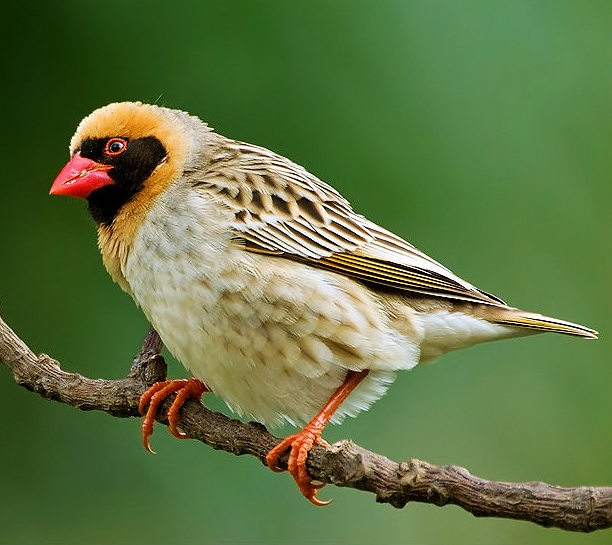 |
| (Photo from Purple “O” Purple) |
Common name:
red-billed quelea (en); quelea-de-bico-vermelho (pt); travailleur à bec rouge (fr); quelea común (es); blutschnabelweber (de)
Taxonomy:
Order Passeriformes
Family Ploceidae
Range:
This species is found across much of sub-Saharan Africa, only being absent from the lowland forests of West Africa, and the most arid areas of southern Namibia, south-western Botswana and the southern half of South Africa.
Size:
The red-billed quelea is 11-13 cm long and has a wingspan of 14 cm. They weigh 15-20 g.
Habitat:
These birds are mostly found in pastures and arable land, but also in dry grasslands, dry savannas and dry scrublands like thornveld.
Diet:
They mostly eat seeds, including wild grasses, but also several cereal crops like maize, sorghum, manna, millet, oats, buckwheat, rice and wheat, making this species a serious crop pest. They also eat some arthropods, including beetles, caterpillars, grasshoppers, crickets, bugs, ants, termites, dragonflies and spiders.
Breeding:
Red-billed queleas are monogamous and highly colonial, forming large colonies that can span for several kilometres. They breed in November-April and the male builds the nest, a small oval grass ball with a side-top entrance covered by a small hood. The nests are typically attached to thorny trees. The female lays 1-5 light-blue eggs, which she mostly incubates alone for 10-12 days. The chicks are fed by both parents and fledge 10-14 days after hatching, but only become fully independent 2 weeks later.
Conservation:
IUCN status – LC (Least concern)
This species has an extremely large breeding range and is possible the most abundant wild bird on the planet with an estimated global population of over 1.500 million individuals. The population is suspected to be stable in the absence of evidence for any declines or substantial threats.







